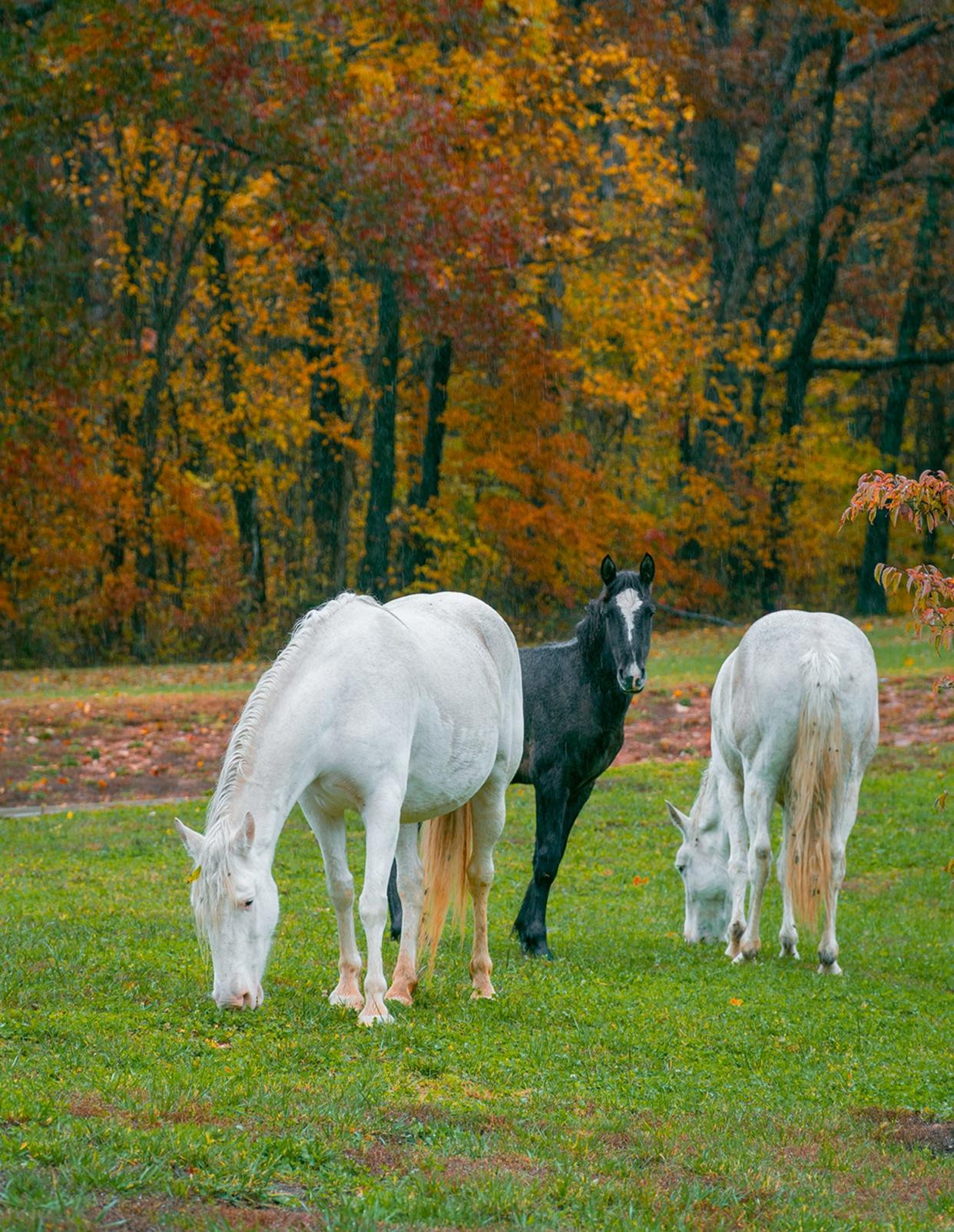Herds of wild horses live in parts of Missouri. Get to know their story

When you think of Missouri, you often think of a vast forest, pond, and prairie ecosystem rich with mostly small mammals, insects, birds, and fishes. What probably does not immediately pop into your head are herds of wild horses. However, we have those too!
These horses not only captivate those who witness them, but also remind us of a historical legacy that leads us all the way back to the hardships of the Great Depression. We are talking about the mysterious herds of horses along the Ozark National Scenic Riverways in southern Missouri.
If you are from this area, you are very familiar with this story, while those from other parts of the state often have no idea.
Time travel back to the Great Depression
The origin of Missouri's wild horse herds is deeply connected with the Great Depression, a period of severe economic distress during the 1930s. As families across the country struggled with financial hardship, many in the rural areas of the Ozarks found themselves unable to maintain their livelihoods.
Forced to abandon their homes in search of better opportunities closer to cities, these families faced the heartbreaking decision to leave their horses behind.
Released into the wild, these domesticated animals gradually formed herds, adapting to the wild environment of the Ozarks where their offspring continue to thrive today.
Social structure in the herd
The wild horses of the Ozarks live in several herds scattered across the region. Typically, a herd consists of about five to 15 individuals, including a dominant mare (the female), who leads and makes decisions on the move; and a protective stallion (the male), who guards the group against predators and threats.
This social structure is crucial for their survival in the wild, enabling them to efficiently find food and protect each other.
These horses are highly adaptable, changing their diet with the seasons. In spring and summer, they graze on grasses, and in the colder months, they feed on shrubs, leaves, and even tree bark to sustain themselves.
Controversy surrounds Missouri's wild horses
While the horses are cherished by many as a symbol of wild beauty, their presence in Missouri's natural landscapes started to bring in controversy. Their grazing habits can lead to overgrazing, which leads to soil erosion.
The horses also trample through delicate areas, damaging plant life and disrupting the habitats of smaller wildlife species.
All of these concerns started a crisis in 1992, when the National Park Service proposed removing the wild horses from Missouri's public lands, arguing that they were non-native species harmful to the ecosystem.
While it is true that the horses were not native and now considered “feral," the amount of harm the relatively small population causes was up for debate. And many do not realize that this stretch of Missouri roads and rivers is controlled by the National Park Service.
This proposal sparked a strong backlash from local communities, who viewed the horses as an integral part of the region's cultural heritage. After intense public debates and advocacy, the community's efforts were successful, and the horses were allowed to remain in their natural habitat, where they are today.
Today, the relationship between the wild horses and the National Park Service represents a collaborative conservation effort. Recognizing the cultural significance of the horses, the Park Service now works to protect and manage the herds in a way that minimizes their ecological impact.
This includes monitoring population sizes, implementing fertility control measures to prevent overpopulation, and occasionally relocating horses to ensure that their numbers remain sustainable.
Take some time to explore this incredible part of our state, and hopefully you’ll get a glimpse of one of Missouri’s wild horse herds.
Mike Szydlowski is a science teacher and zoo facilitator at Jefferson STEAM School.
TIME FOR A POP QUIZ
How did the wild horse herds in Missouri originate?
What is the typical social structure of a wild horse herd?
Why did the National Park Service propose removing the wild horses?
How did the local community react to the proposal to remove the wild horses, and what was the outcome?
What measures are currently being taken to manage the wild horse populations in Missouri?
LAST WEEK'S QUIZ ANSWERS
How does deforestation near the Panama Canal impact its water levels?
Deforestation reduces the number of trees available to absorb rainfall and release water vapor back into the atmosphere, a process crucial for rainfall. Less rainfall leads to lower water levels in regions like the Panama Canal.
What measures have the Panama Canal Authority taken to manage the reduced water levels?
The Panama Canal Authority has raised toll rates and limited the size and number of ships that can pass through the canal.
Why is the Amazon Rainforest important for regional and global climate regulation?
The Amazon Rainforest is vital for climate regulation as it stabilizes the global climate and cycles vast quantities of water and carbon.
What are the implications of the severe droughts on the Panama Canal's future?
Severe droughts threaten the operational viability of the Panama Canal by lowering the water levels necessary for operating its locks. This situation endangers global trade and economic stability, as the canal is a critical passage for international shipping.
How are local coffee farmers contributing to solutions for the Panama Canal's water issues?
Local coffee farmers in Capira have been encouraged by an incentive program to plant more trees and adopt sustainable farming practices.
This article originally appeared on Columbia Daily Tribune: Learn the story behind Missouri's wild horses
